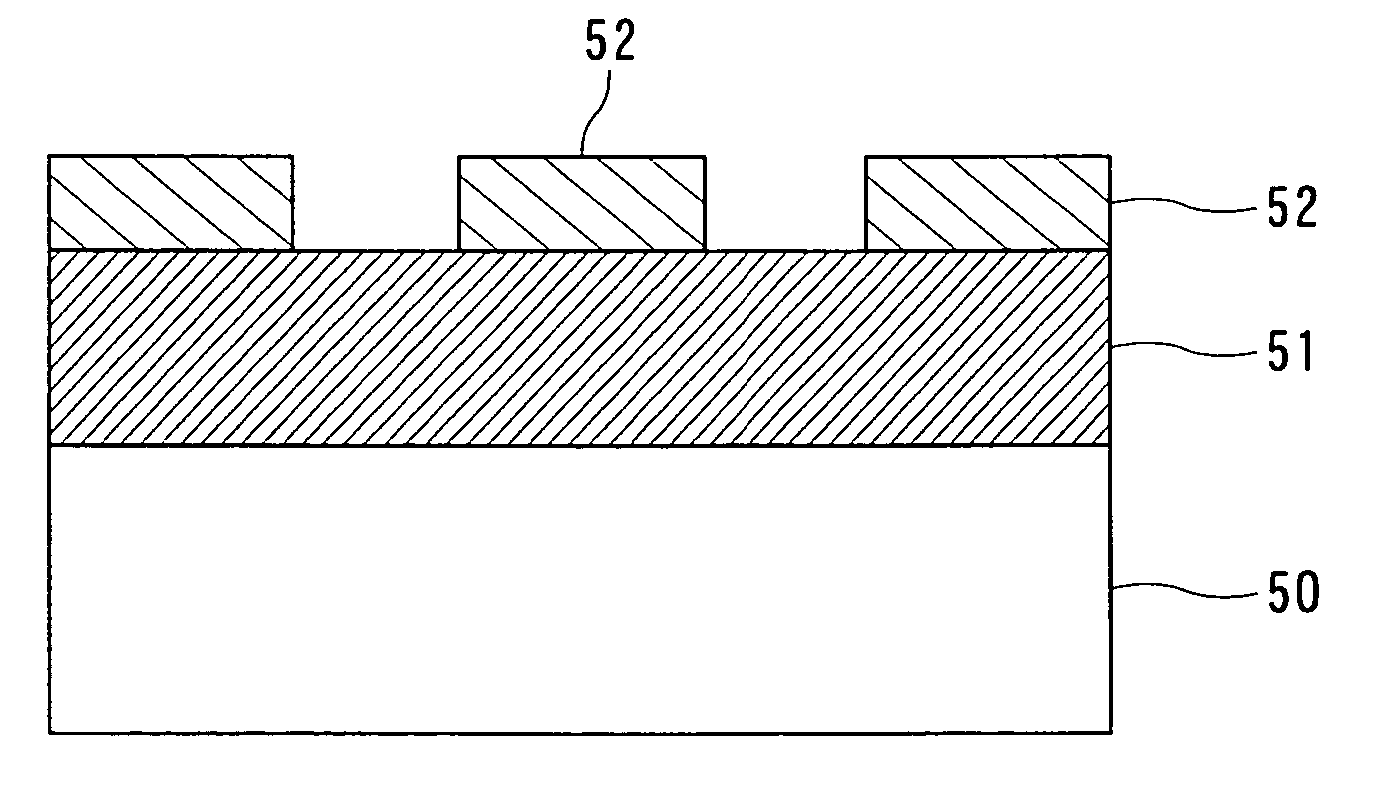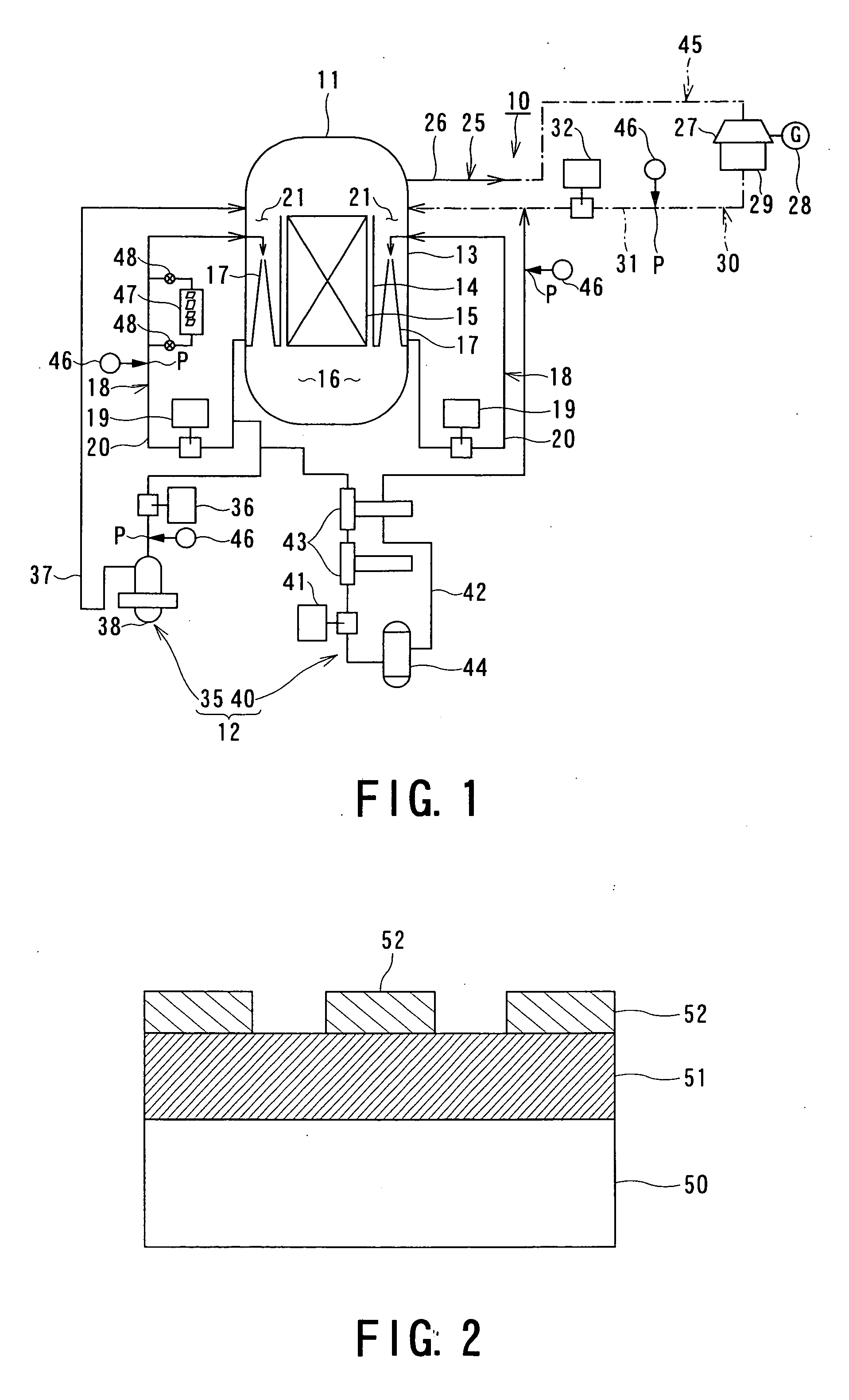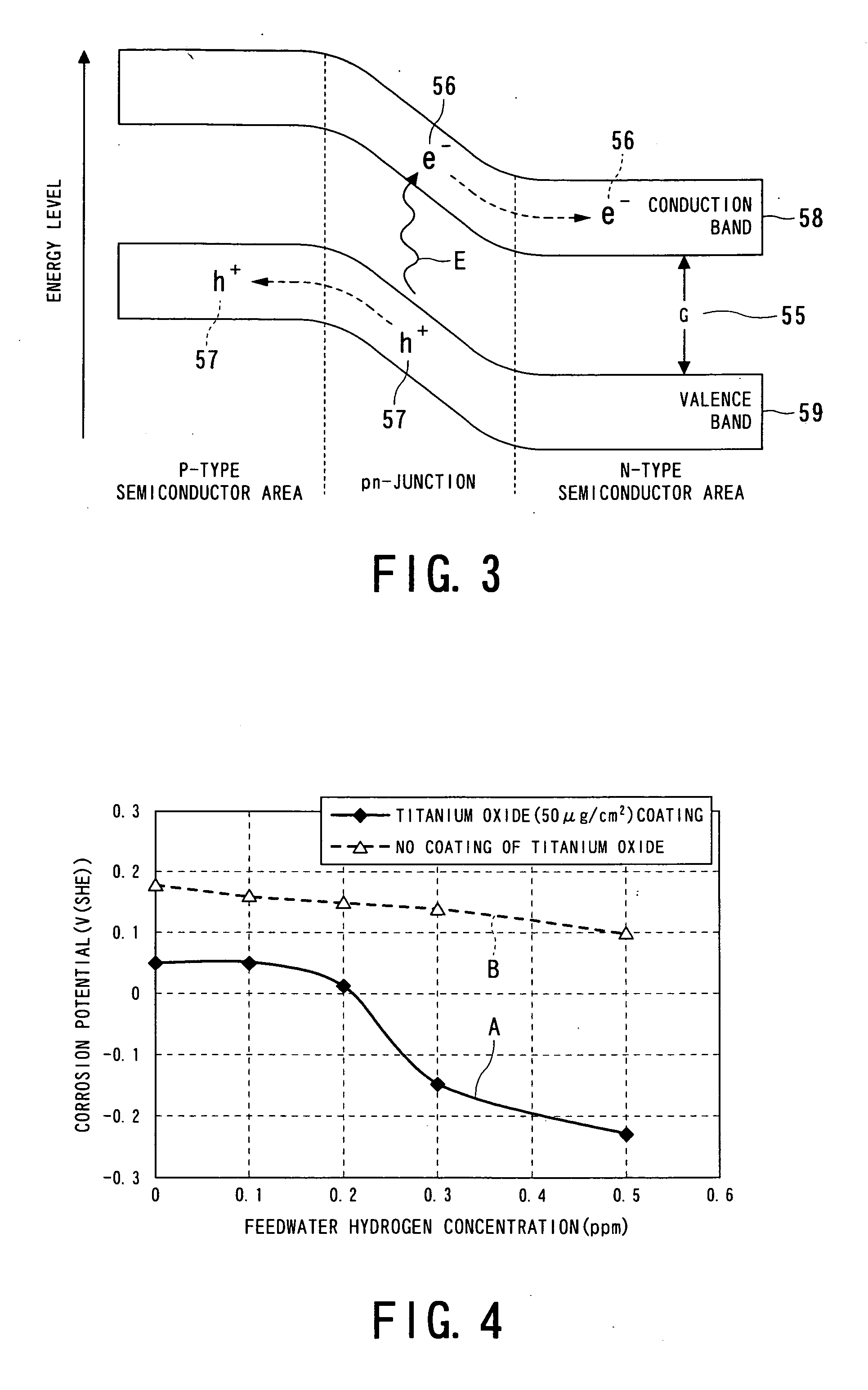Nuclear power plant, method of forming corrosion-resistant coating therefor, and method of operating nuclear power plant
a nuclear power plant and corrosion-resistant coating technology, applied in nuclear power plant operation, nuclear elements, greenhouse gas reduction, etc., can solve the problems of difficult flow of electric current, large number of narrowed parts of nuclear power plant, and rare corrosion prevention effect of parts not exposed to ligh
- Summary
- Abstract
- Description
- Claims
- Application Information
AI Technical Summary
Benefits of technology
Problems solved by technology
Method used
Image
Examples
first embodiment
[0073] A first embodiment of the present invention will be described with reference to FIGS. 2 to 4.
[0074] In the first embodiment, the austenitic stainless steel widely used in the reactor structural materials of the reactor primary cooling system 45 and the cooling water circulation system 12 of the nuclear power plant 10 is provided with corrosion-resistant oxide films.
[0075]FIG. 2 is a schematic diagram showing a surface of a metal component having a corrosion-resistant coating on the surface of SUS316L stainless steel, which is one example of the austenitic stainless steel.
[0076] In this embodiment, a corrosion-resistant, corrosion-protective oxide film (film) 51 composed of an oxide, such as Fe3O4, having the properties of a P-type semiconductor is formed on a metal base material 50 composed of SUS316L stainless steel, and titanium oxide serving as a catalytic substance 52 having the properties of a N-type semiconductor is deposited on the oxide film 51.
[0077] The catalyti...
second embodiment
[0085] A second embodiment of the present invention will be described hereunder with reference to FIGS. 5 and 6.
[0086] In this second embodiment, the structures identical to those of the first embodiment are referred to by adding the same reference numerals and explanation thereof is omitted herein, and the effects identical to those of the first embodiment are also attained, which are not described to avoid redundancy.
[0087]FIG. 5 is a graph showing the influence of the particle diameter of the oxide having the properties of the P-type semiconductor deposited on the surface of the metal base material 50 on the corrosion potential V. The graph shows results of a case in which an Fe3O4 oxide film 51 is formed on the metal component made of austenitic stainless steel, SUS316L, and a case in which an NiO oxide film 51 is formed on the metal base material 50 made of stainless steel alloy, i.e., an Ni-based corrosion-resistant alloy, Alloy 600 (Inconel 600). A solid line C shows the co...
third embodiment
[0099]FIG. 9 is a graph related to a third embodiment of the present invention.
[0100] In the description of the third embodiment, the structures identical to those of the first embodiment are referred to by the same reference numerals to omit repeated explanation, and the effects identical to those of the first embodiment are also attained, but omitted in description to avoid redundancy.
[0101] The graph in FIG. 9 shows the corrosion potential characteristics observed from a test piece in which the metal base material 50 composed of SUS316L is coated with an Fe3O4 oxide film 51 having the properties of a P-type semiconductor and a thickness of 0.05 μm, and from a test piece in which the metal base material 50 composed of a Ni-based stainless steel alloy, i.e., Alloy 600, is coated with a NiO oxide film 51 having a thickness of 0.05 μm, while varying the amount of titanium oxide serving as the catalytic substance 52 deposited on the oxide film 51.
[0102] The graph shows that as the ...
PUM
| Property | Measurement | Unit |
|---|---|---|
| temperature | aaaaa | aaaaa |
| average particle diameter | aaaaa | aaaaa |
| thickness | aaaaa | aaaaa |
Abstract
Description
Claims
Application Information
 Login to View More
Login to View More - R&D
- Intellectual Property
- Life Sciences
- Materials
- Tech Scout
- Unparalleled Data Quality
- Higher Quality Content
- 60% Fewer Hallucinations
Browse by: Latest US Patents, China's latest patents, Technical Efficacy Thesaurus, Application Domain, Technology Topic, Popular Technical Reports.
© 2025 PatSnap. All rights reserved.Legal|Privacy policy|Modern Slavery Act Transparency Statement|Sitemap|About US| Contact US: help@patsnap.com



